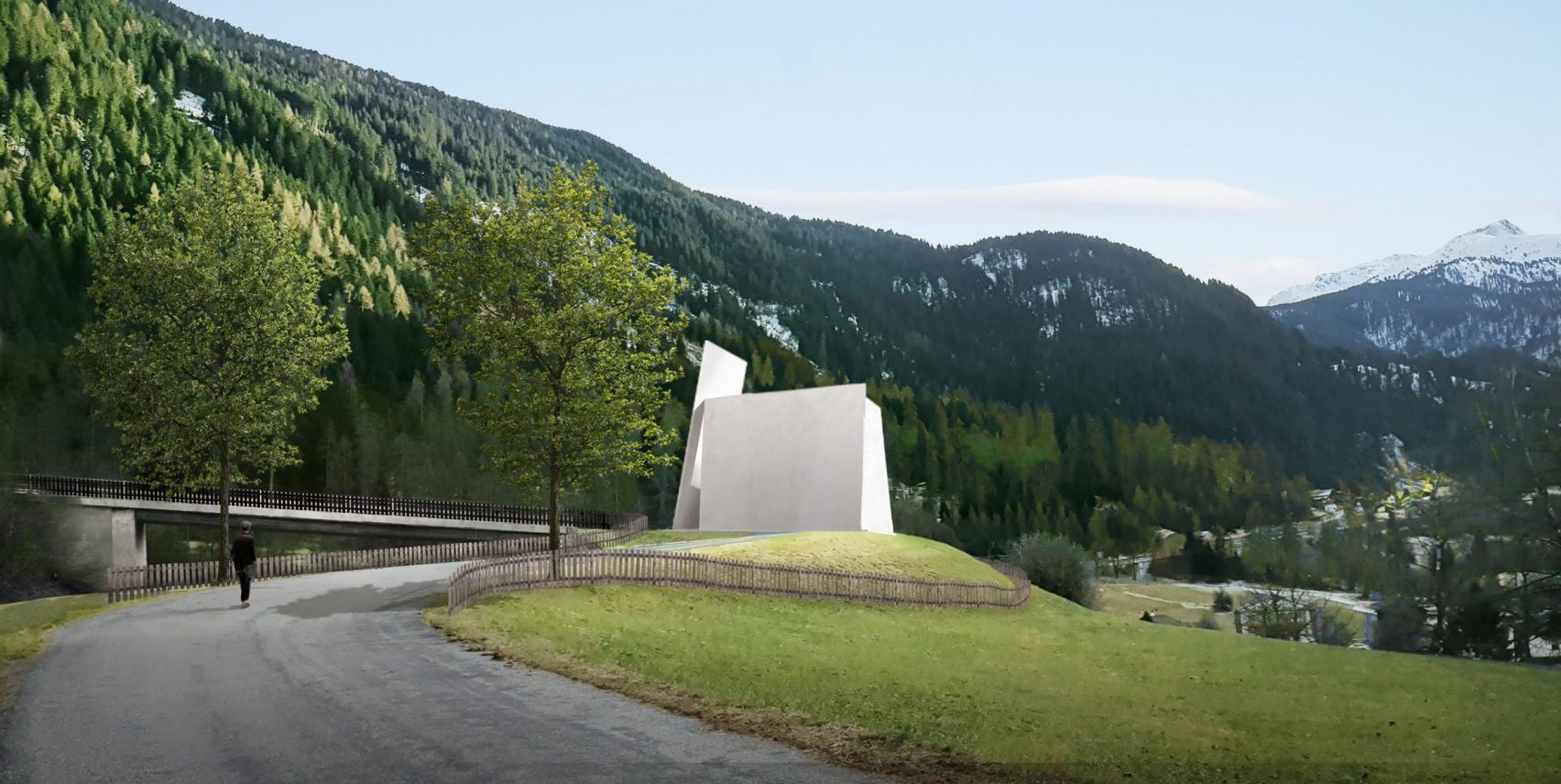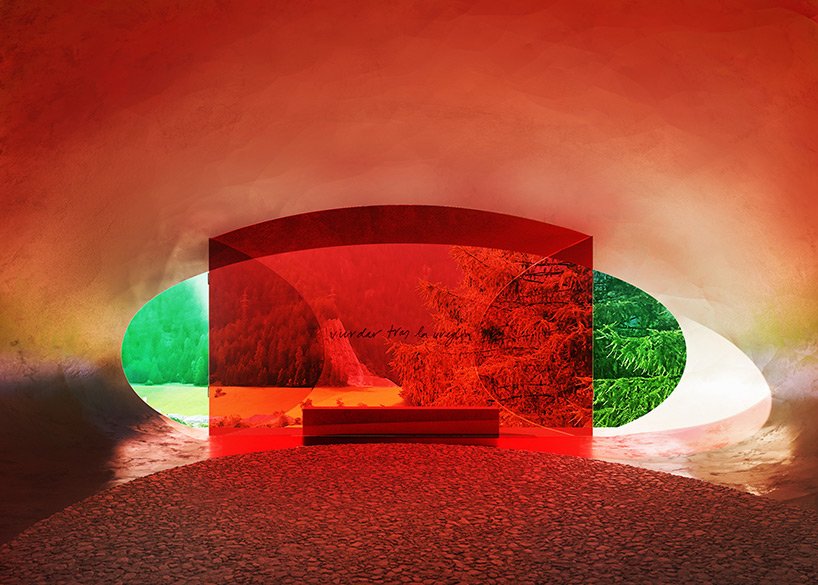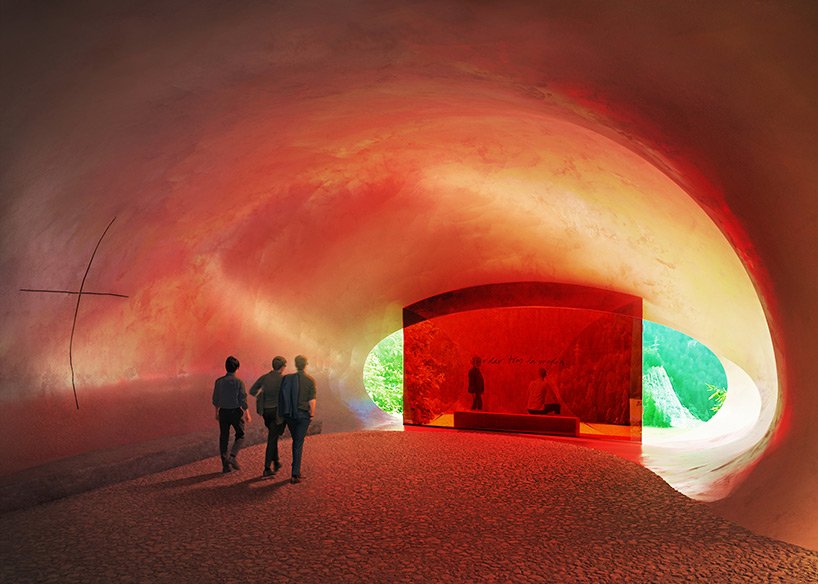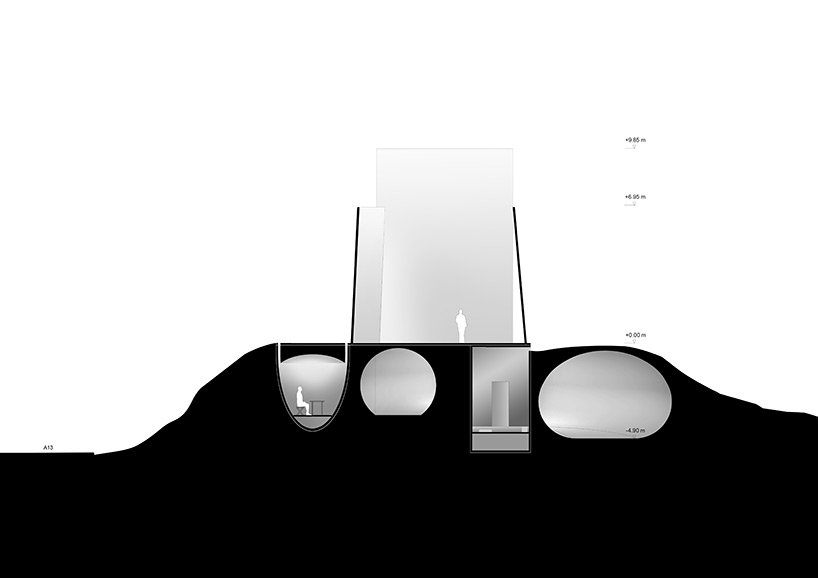The Swiss architecture firm Herzog and de Meuron revealed renderings of their design for the first motorway chapel in Switzerland. The ‘autobahnkirche‘ is set to be built in the outskirts of Andeer, to welcome travelers on the A13 highway. There are several chapels in the surroundings; blending perfectly in with their urban context, and with the landscape. The archaic chapels are functioning very well, and their architecture tells stories of history, but the need for a personal space to connect with nature is growing as a theme across Europe.
Herzog and de Meuron spent time and effort hunting for ideas. There were no specific locations or spatial programs, so they chose to engage the community in their process, to create something that presents a sense of place.
Concept Development
Herzog and de Meuron‘s design team decided to follow no reference but nature. “…no typological models, no churches, no prayer room, no recent architecture.” said the architects. They believed that the concept of the autobahnkirche has to emerge only from every element in the site: the highway, the forests, and the mountains.
The main theme of the chapel was to take the travelers away from the motorway noise to the quietness of nature. The design process started with a solid white cube; zoned like the inners of a human ear, to manage the motorway’s noise. Although not separated by doors or partitions, the motorway’s sounds become weaker as you go deeper into the chapel, and the sounds of footsteps and breathing become stronger.
But Herzog and de Meuron realized that an introverted cube won’t create a specific environment for each activity as planned; “We wanted the architecture to reinforce the perception,” they said. To break free from the typical definition of a building, the roof plane was removed and the walls tilted inwards to support each other.
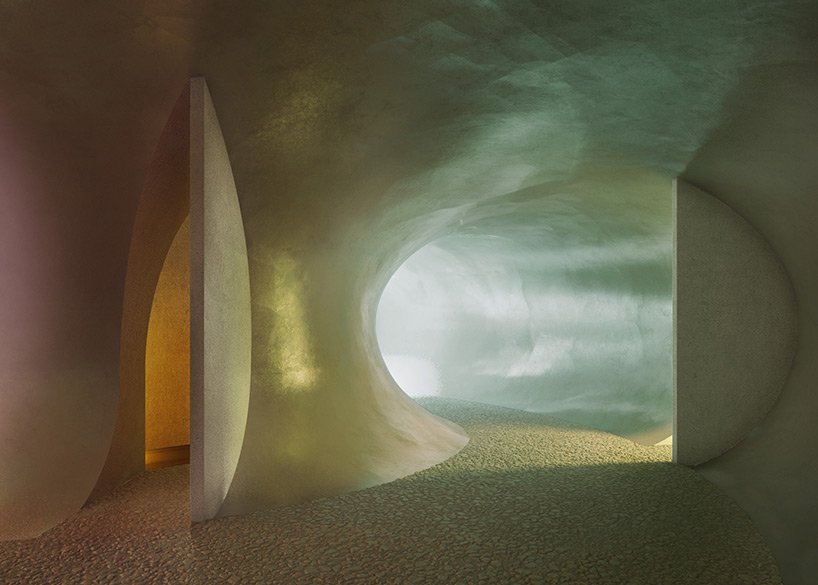
© Herzog & de Meuron
Writing the Trip
The design team developed the chapel to be both a place and a path – A place to pray, introspect or rest, and a path from the dynamic motorway to the peaceful nature. The above-ground chapel is enclosed with 10 meters high walls.
The ‘earth room’ underground features a curved path, and it can be accessed from an entrance down the hillside, or from a spiral staircase descending from the above-ground chapel. The main chapel branches two smaller rooms; each with a different theme and purpose: The round chapel is for readers; with abundant daylight from above. The second chapel features a matte, reflecting wall, and is lit with a candle and a single skylight.
“The last room with the red pane of glass opens up into a cave-like oval, reminiscent of the early Christian or heathen sites that archaeologists have discovered in the neighboring community of Zilli’s.”
The earth room opens the view and the path to the surrounding landscape. “Perception of the vegetation is heightened by the complementary red of a room-height pane of tinted glass,” said the architects.”This is the most personal place for visitors; here they are confronted with themselves.”
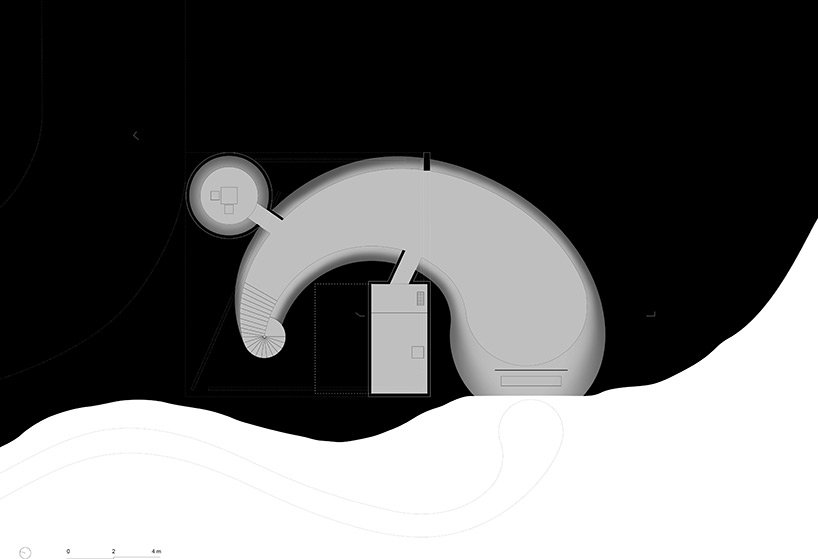
© Herzog & de Meuron
Herzog and de Meuron always promise a different user experience, and their practice includes projects both in Switzerland and across the world. Another futuristic adaptation of an avant-garde concept by Herzon and de Meuron is the Horizontal Skyscraper in Moscow.
Project Info:
Architect: Herzog and De Meuron
Location: Andeer, Switzerland
Project Name: Autobahnkirche
Area: 278sq.m
Height: 10m
